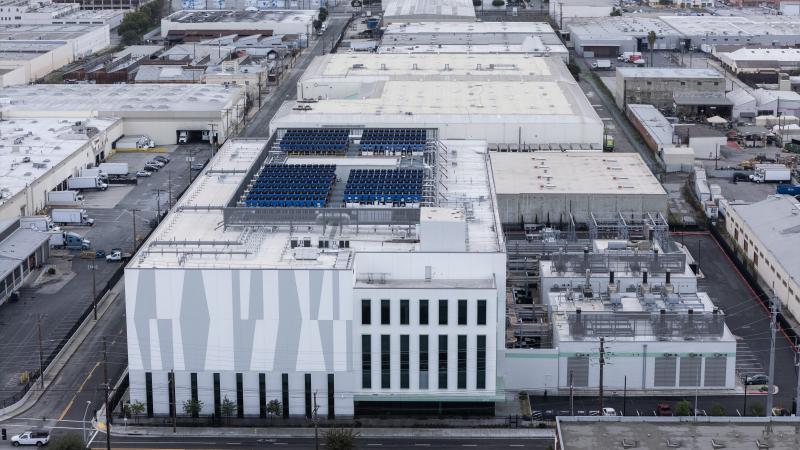America’s electricity grid is stressed, and new data centers may put even bigger demands on it
The estimated global energy consumption in 2022 for data centers and crypto mining, as well as the power to transmit that data, was between 600 and 850 terawatt hours. It was enough to power 8.5 trillion 100-watt light bulbs for 1 hour.
For the past couple of years, assessments of the national electric grid’s ability to deliver power during peak demand periods, such as heat waves and cold snaps, have shown increasing risk for blackouts.
The North American Electric Reliability Corporation, the nation’s grid watchdog, finds the main cause is retirements of coal plants without enough natural gas plants coming online.
Besides the ability of generation sources to meet demand during peak periods, the general demands on the grid are also increasing. Environmental groups are pushing to transition home heating from natural gas to electricity, and electric vehicles are also adding to the grid's thirst for power.
Among this mix of increasing electricity needs are data centers. Data centers manage and store the data for streaming services, email applications, e-commerce transitions, online gaming, and machine learning and artificial intelligence (AI). Along with crypto mining and data storage, AI is expected to double the electricity demand from data centers by 2026, according to the International Energy Agency (IEA).
The estimated global energy consumption in 2022 for data centers and crypto mining, as well as the power to transmit that data, was between 600 and 850 terawatt hours, according to the IEA. To keep a 100-watt light bulb running for one hour requires 100 watt hours. So the amount of energy in 2022 consumed by data centers, crypto mining and data transmission networks was enough to power 8.5 trillion 100-watt light bulbs for 1 hour.
According to the Energy Policy Research Foundation, a nonpartisan not-for profit think tank founded in 1944, this single sector puts these electricity demands on par with the total national electricity consumption of countries such as Brazil, Canada, or South Korea.
Max Pyziur, research director for the Energy Policy Research Foundation, told Just The News there’s some wildcards that make estimations of future electricity consumption by data centers difficult to pin down with any precision.
For one thing, data centers have their own electricity backup. Often this is in the form of diesel generators, but some utilize batteries. Pyziur said that up to 40% of the square footage of a data center is allocated to backup generation. While these resources are only used intermittently, they will contribute to the resources available to satisfy demand.
The other factor that creates uncertainty is efficiency gains, Pyzuir explained. This includes the replacement of legacy copper lines with fiber optic cables, which accelerates the throughput rates of data. Also, legacy mechanical spinning hard drives are being replaced with solid state drives, which use less energy.
The last piece, Pyziur said, is the central processing units (CPU). These have gotten considerably faster, which means you need less of a footprint to process the same amount of data. “The bulk of electricity that's used by a data center is by the CPUs. So we know that will be the next physical frontier that we have to master,” Pyziur said.
Between 2010 and 2023, data center power requirements, as a result of the growth in the number of data centers, grew by 168%, or just 4% annually, according to Pyziur’s and his colleagues’ research. In that time, however, the power usage effectiveness, which is an industry measure of efficiency, grew by 1,430%.
This has constrained some of the growth in electricity demand. Between 2010 and 2023, data center energy requirements globally grew from 0.43% of the electricity generated to 0.52%. During that period, the number of workload units, which is a measure of computational task, processes or data transactions, grew from 58 million to 821 million, an annual increase of 22.7%.
Whether or not efficiency gains will reduce or flatten energy requirements from data centers — or just slow the increase — could depend on what economists call the “rebound effect.” According to the Energy Policy Research Foundation, rather than promoting conservation and diminished usage of a technology, such as the internet, efficiencies lead to increased usage of the technology.
As an example, a fuel-efficient motor that increases a car’s mileage will translate into longer road trips rather than less gasoline consumption. The same could be happening with data centers. The more they can do, the more they may be used.
“It’s a question mark. We don’t know. We'll probably see a lot of electricity requirements, a big electricity demand, but data centers themselves have proven to become more efficient over time,” Pyziur said.
The Facts Inside Our Reporter's Notebook
Links
- increasing risk for blackouts
- retirements of coal plants without enough natural gas plants coming online
- pushing to transition home heating from natural gas
- electric vehicles are also adding to the grid's thirst for power
- according to the International Energy Agency
- 100-watt light bulb running for one hour
- Energy Policy Research Foundation
- electricity demands on par with the total national electricity consumption of countries
- diesel generators
- utilize batteries
- according to Pyziur's and his colleagues' research
- data center energy requirements globally grew
- which is a measure of computational task, processes or data transactions















